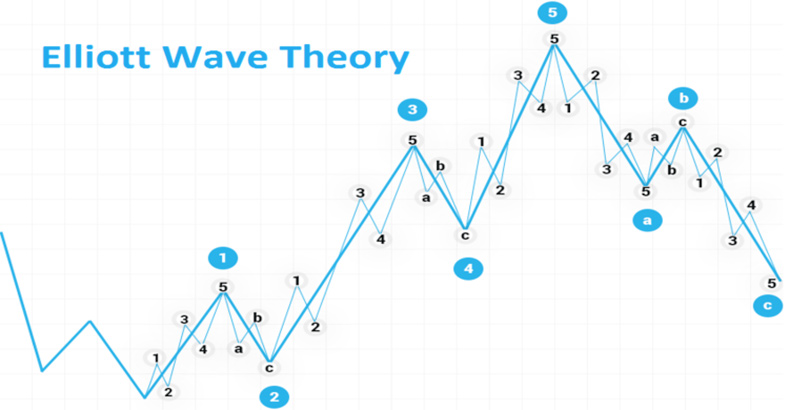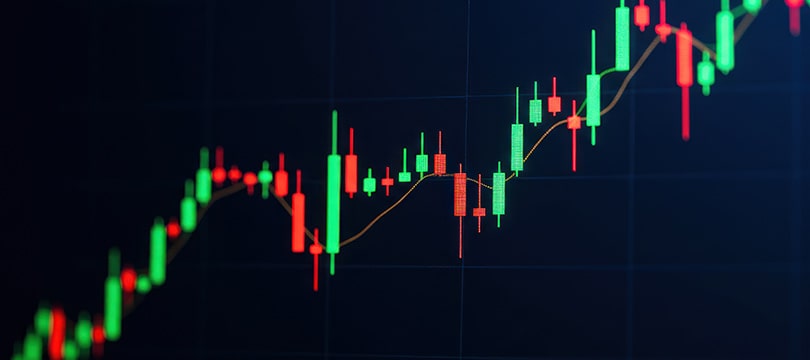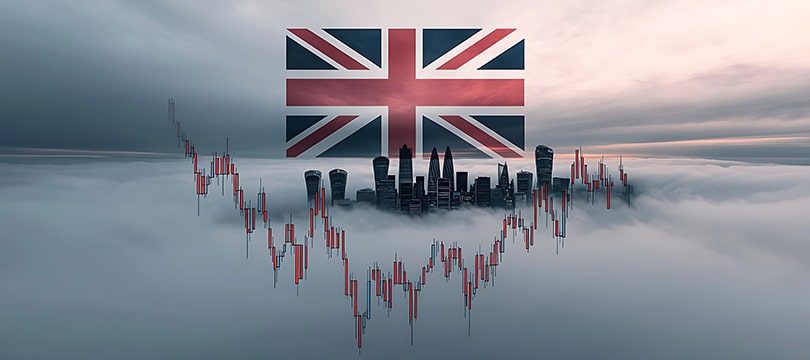Who was Elliott?
The Elliott Wave Theory was developed by Ralph Nelson Elliott, a famous investor who lived between the nineteenth and twentieth centuries, during a period when finance as we know it today was emerging. It's not surprising, then, that his elaborations still serve as a foundation for any discussion on markets, trading, and investments. Elliott trained as a manager and financial executive for some major private US companies operating in the railroad industry. He ended his career as the Chief Account of the US State Department for Nicaragua, then an American protectorate. A few years later, he published a bestseller in which he enunciated his theory and laid the foundations for the practice of technical analysis: The Wave Principles.The principles of Elliott Wave Theory
So, what is the Elliott Wave Theory about? It's a theory that deals with the concepts of nature, cyclicality, and psyche. Let's address these three aspects separately.The market as a natural phenomenon
According to Elliott, the market is a natural phenomenon. It may seem like a contradiction in terms, but the discourse holds, at least on a logical level. The market is governed by human beings who behave according to natural rules. Therefore, the market is also "natural". This simple but brilliant intuition led Elliott to seek parallels with actual natural phenomena, convinced that he could apply the same rules. From this arose the concept of cyclicality.The market as a cycle
According to Elliott, the market is a succession of cycles; it follows a cyclical trend. Today this appears as an obvious truth, but at the time, it caused quite a stir. Moreover, this intuition derives precisely from the equation "market equals nature". After all, one of the most recurring characteristics of natural phenomena is precisely cyclicality. According to Elliott Wave Theory, and confirmed by almost a century of financial history, prices follow cyclical movements, roughly regular although varied in amplitude and duration.The market as a psychological phenomenon
In Elliott Wave Theory, nature and psychology coexist. Human beings behave according to nature, and in them, nature is expressed through psychological dynamics. It follows that price movements are determined by psychological factors, by the alternation of pessimism and optimism, rather than by fully rational underpinnings, by an objective condition of the economy, economic relationships, etc. This view may be considered a bit extreme by some, but there is a grain of truth to it. A truth that allowed Elliott to lay the foundations not only of technical analysis but also of Sentiment analysis, given the importance attributed to the latter.The Elliott Waves
The most genuine product of Elliott Wave Theory is the Waves. If it is true that the market follows cycles, then these must necessarily be formed by waves. We could define them as macro-oscillations that are placed in a relationship of coherence or contradiction with the general trend. Specifically, Elliott distinguished between impulsive waves and corrective waves. The former are followed by the latter. At the end of the cycle, there is always a heavily corrective movement, which is considered as a separate phase. The impulsive waves are those that follow the trend. The name should not surprise: if it is true that movements are dictated by psychology, then the waves can only be impulsive. The corrective waves go against the trend and tend to mitigate the excesses of the previous ones. Each wave has a precise meaning. Let's assume a positive trend.
Each wave has a precise meaning. Let's assume a positive trend.
- Wave 1 (impulsive). The trend has started, but the increase is still not very marked as investors are still showing skepticism or are held back by oversold prices.
- Wave 2 (corrective). Some traders still don't trust the trend, so they sell, trying to generate a surplus before it's too late.
- Wave 3 (impulsive). The trend is confirmed, so more and more buyers enter the scene. The price grows rapidly.
- Wave 4 (corrective). Some investors try to take advantage of the bullish phase and sell, thinking of an imminent decline. However, confidence in the trend is high, so this wave is generally very short.
- Wave 5 (impulsive). The trend reaches its peak, and the same can be said of prices. The market is very crowded.




